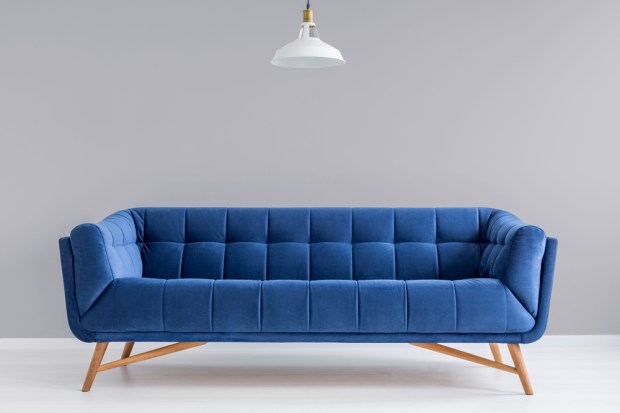Startup Spotlight: Hutch Furniture App Helps Make Houses Homes

Once upon a time, if a customer bought a couch, that was it: That was their couch for the next 30 years, and they didn’t need to go furniture shopping again (or if they did, it was for matching curtains, a rug or a side table — not another couch).
Today’s shoppers treat furniture as much more disposable. That’s not necessarily by choice — millennials move around a lot, and it’s not always practical to take bulky furniture with them, even if they would have liked to keep it. That means they’re often on the hunt for pieces to furnish their new apartment, or perhaps their first home.
One way the space has responded has been to make home furnishings more available at the stores where this demographic already shops. Apparel retailers like H&M and Forever 21 have tapped into the trend to try to drive sales in this new (or new-to-them) category.
Others are getting techy with it. Because come on — who wants to shop in a store anymore? We’re living in a Stitch Fix world. The challenge with furniture is that it’s much bigger and more expensive to buy and move than clothing. Stitch Fix makes it easy to receive, try on and return unwanted items, but that just doesn’t work for a couch.
“People are happy not to have to go to furniture stores anymore, but that introduced new problems,” said Beatrice Fischel-Bock, CEO and co-founder of the startup Hutch.
That’s why Hutch wanted to create a way for customers to have that “try-on” experience without the headache and expense of actually trying a physical piece of furniture in a physical space.
Hutch’s mobile app lets customers virtually reinvent their living space, then buy their favorite pieces from the mock-up — often a mish-mash of brands that the customer won’t know until receiving the item, or may never learn at all.
Shoppers start by playing around in a sandbox-style template room to get a sense of what kind of look they hope to achieve using Hutch’s curated looks. When they find one they like, they upload a photo of the space they want to furnish and the designers get to work. A 3D rendering is delivered in minutes.
The process is tech-driven but has professional designers developing the renderings behind the scenes. After all, not every shopper has the ability to look at a piece on a showroom floor, website or mobile app and visualize that piece in their own home — in fact, it’s safe to say that’s a pretty rare skill mostly reserved for interior designers.
Hutch’s app is not quite augmented reality (AR), since customers are submitting a still photo for designers to work with, but the spirit is similar to that of the AR mobile app by IKEA, which lets customers visualize how a sofa, armchair, ottoman or coffee table will look in their homes before they go to the expense and trouble of buying and assembling it.
Hutch does plan to add some similar components in the coming months, enabling customers to move furniture around in the designer mock-up and mix and match with pieces they already own. But there is something to be said for having real designers at work behind the scenes. Even with the help of a rendering, many customers find themselves at a loss when faced with the artistic process of making their house into a home.
Fischel-Bock said that the live designers are a key advantage of the platform. “Once you’re in our flow, there’s only so much you can do wrong,” she said. Customers get the best of both worlds by choosing their own look and then, ultimately, having that look executed by a pro.
Still, Fischel-Bock sees the potential for AR solutions — that is, once the user experience matures. With Apple’s ARKit, companies like Warby Parker and Sephora are letting customers try on glasses and makeup, but Fischel-Bock said that the technology is young and the experience still has a ways to go.
One day, though, it’s possible that consumers will be able to virtually experiment with anything — furniture, glasses, makeup, clothing and who knows what else — from the comfort of their brand-new, temporary couch.
